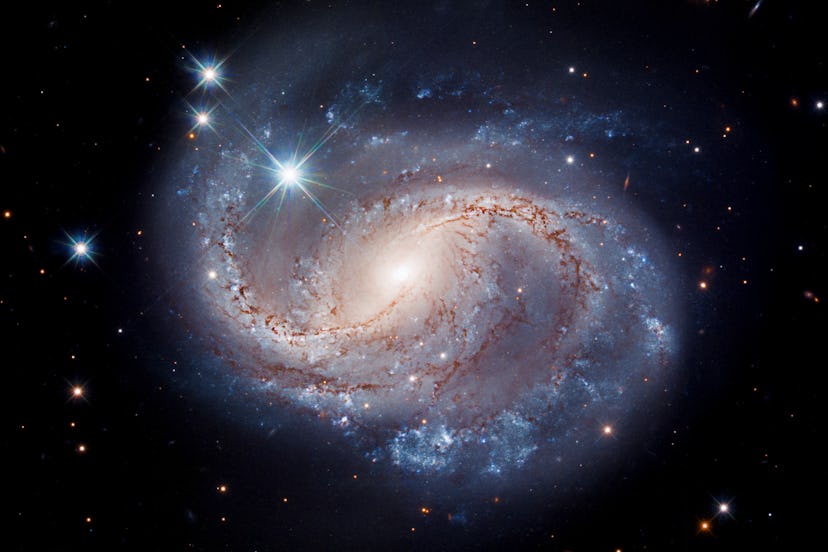This Hubble Telescope Pic Of A Spiral Galaxy Is Out Of This World
This galaxy exists 214 million light-years away in the constellation Delphinus.

NASA has released some seriously stunning images from outer space that are literally otherworldly over the past year. We’ve seen pillowy clouds of bright oranges and reds, sparkling galaxies that are home to millions of stars, nurseries for infant constellations, and intricate patterns that are magical to stare at. Now NASA’s latest release shows a spiral galaxy that’s out-of-this-world majestic.
On Dec. 15, NASA released a new image from the Hubble Space Telescope showing the spiral galaxy known as NGC 6956. This is what you need to know.
Can you explain what we see in these photos like we’re 5 years old?
Chances are if we were asked to draw a picture of a galaxy, we would conjure up something like this new image. We can see the classic white swirl surrounded by deep black and sparkles of stars — a more typical galaxy shape. But what exactly are we looking at?
What you’re looking at is NGC 6956, a “barred spiral galaxy, a common type of spiral galaxy with a bar-shaped structure of stars in its center,” NASA explains. This galaxy, which is part of the constellation Delphinus, is 214 million light-years away, which means the telescope captured how this galaxy looked 214 million years ago. What could it look like today?
Scientists with NASA are interested in NGC 6956 because of the Cepheid variable stars in the galaxy. These stars brighten and dim at regular periods, and that allows scientists to calculate the distance in space by comparing the brightness from what we can see on Earth versus what the telescope picks up.
“As a result, these stars are extremely useful in determining the distance of cosmic objects,” NASA explains, “which is one of the hardest pieces of information to measure for extragalactic objects.”